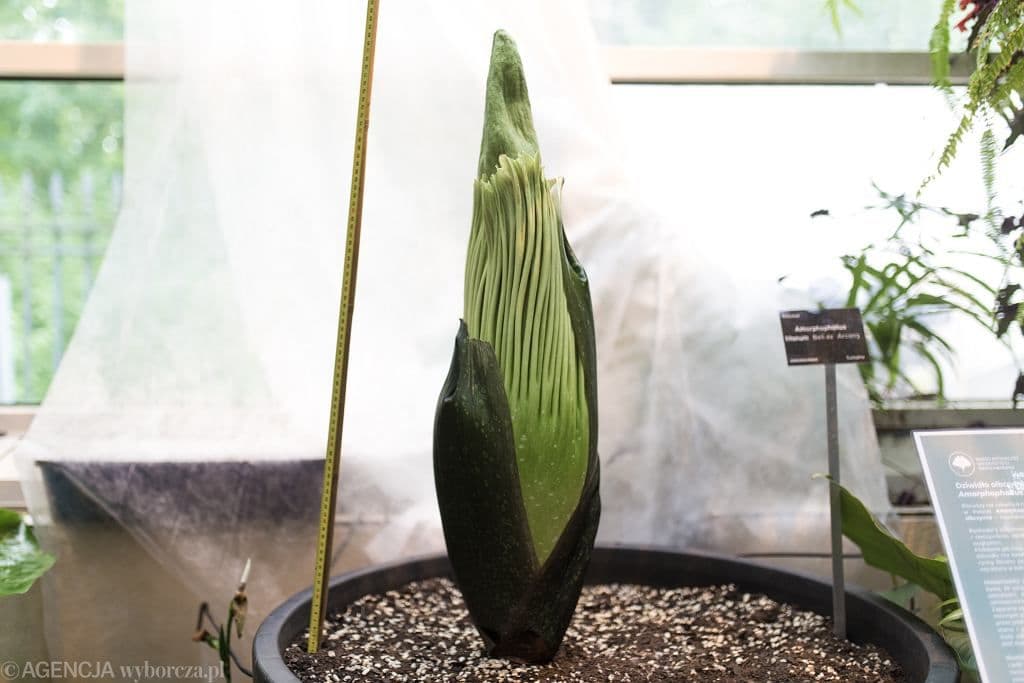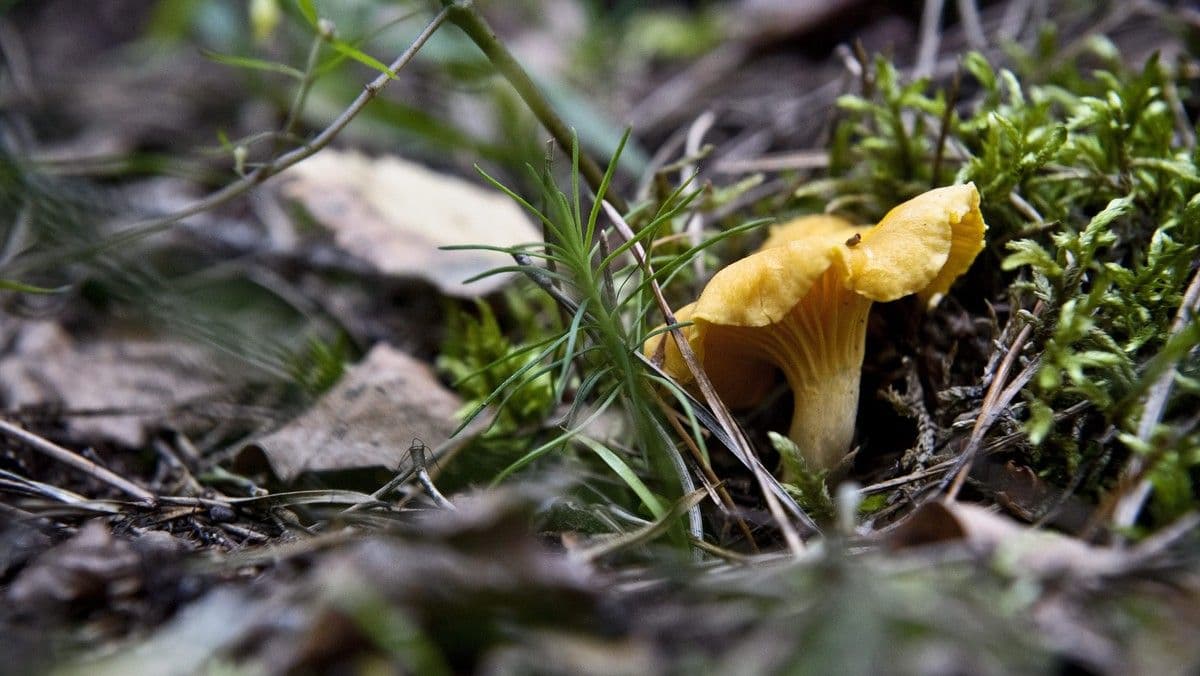Poland's Putrid Jewel: The Untold Story of the Corpse Flower's Resilient Return
Dive into the captivating, malodorous world of Poland's Titan Arum. Unravel its rare blooming mystery & the dedicated efforts bringing this botanical giant to life.
The Paradox of the Titan: An Introduction to Nature's Most Bizarre Bloom
Imagine a plant so colossal it dwarfs human beings, so rare its bloom is a once-in-a-decade marvel, and so potent in its aroma it’s affectionately known as the 'Corpse Flower.' This is the , or 'dziwidło olbrzymie' in Polish, a botanical enigma that challenges our very notions of floral beauty. Towering over three meters high with a bulb weighing up to 100 kilograms, its creamy spadix contrasts dramatically with the deep, cherry-colored spathe that envelops it. Discovered in the late 19th century in 's tropical forests, where it blooms infrequently even in the wild, its appearance in cultivation is an even rarer spectacle.
For , specifically the , the impending bloom marks only the second such event in the nation's history. While the first flowering took over a decade of dedicated care, the second comes a mere four years later, a testament to the garden's growing expertise. Experts, though thrilled, admit that pinpointing the exact moment of its full glory remains elusive. This plant truly looks otherworldly, closer to the fantastical flora of from 'Avatar' than anything typically found on Earth, presenting a profound paradox: an object of immense fascination despite its notoriously repulsive scent. But how did such an extraordinary specimen find its way to Polish soil?
A Journey Against All Odds: Bringing Sumatra's Giant to Polish Soil
The arrival of the in was anything but straightforward, underscoring the formidable challenges inherent in cultivating such an exotic giant. This colossal plant, native to the humid equatorial rainforests of , found its way to the not through a grand expedition, but as a generous, yet challenging, donation. A private individual, identified only as , had acquired the plant but quickly realized he couldn't provide the specialized conditions it required to thrive.
As the Botanical Garden staff recounted, simply transporting the enormous bulb demanded 'no small feat of gymnastics.' Yet, that was just the beginning. Ensuring the plant's sustained health and encouraging it to bloom presented an even 'greater challenge,' one that continues to this day. Upon its arrival, the dziwidło olbrzymie was carefully relocated to the garden's tropical greenhouse, its new sanctuary. Its initial period of 'acclimatization' was far from easy for the multi-kilogram bulb, a precarious phase that tested the limits of horticultural expertise. This unexpected journey set the stage for a remarkable saga of survival and dedication, highlighting the immense commitment required to nurture a piece of Sumatran wilderness in the heart of .
The 'Ritual Dance' and Resurrection: Dedication Beyond Expectation
The journey of is a compelling narrative of resilience, marked by a dramatic near-death experience and an extraordinary 'resurrection' orchestrated by dedicated botanists. The staff's joy at the prospect of a second bloom is palpable, a feeling born from years of unwavering commitment. The plant's initial bloom in 2021 was a monumental achievement, especially considering the arduous path it had taken.
A particularly harrowing episode occurred years prior when the bulb was accidentally exposed to frost during winter, leading to significant damage. Gardeners discovered it the next morning, but the chilling truth was undeniable: the bulb had begun to rot. For three agonizing years, the dziwidło remained dormant, refusing to sprout new leaves, a period that tested the patience and ingenuity of its caretakers. It was only after a series of unconventional, almost 'ritualistic dances' – a metaphor for their persistent and creative interventions – that the plant finally showed signs of life, 'resurrecting' in 2018. This painstaking effort culminated in its inaugural, long-awaited bloom in 2021, transforming it into a national 'tourist sensation.' This remarkable comeback story underscores the profound dedication required to coax such a temperamental titan into bloom, paving the way for its next malodorous display.

Decoding the Dreadful Scent: The Science Behind the Stink
No discussion of the Corpse Flower is complete without addressing its most infamous characteristic: the profoundly repulsive odor that gives it its evocative name. Those fortunate enough to witness its bloom universally describe the scent as 'stinky,' likening it to a 'smelly pond or a dead mouse.' Others offer even more vivid comparisons, from the stench of 'rotting fish' to the distinct aroma of 'sweaty socks.' What makes this olfactory assault even more potent is the plant's unique ability to generate heat during its brief flowering period, intensifying and dispersing the foul fumes.
But this isn't just a random unpleasantness; it's a precisely engineered biological strategy. Chemical analyses of the flower's spadix have revealed the specific compounds responsible for this dreadful bouquet. Dimethyl trisulfide and disulfide contribute notes of cheese and garlic, while trimethylamine evokes the smell of decaying fish. The pungent aroma of isovaleric acid completes the ensemble, reminiscent of well-worn athletic footwear. This intricate blend of putrid scents serves a crucial purpose: it acts as an irresistible lure for specific pollinators, primarily carrion-feeding insects like flies and beetles, which are essential for the plant's reproduction. The entire malodorous affair, critically, lasts for only a fleeting 'several to several dozen hours,' making its impact as brief as it is unforgettable.
The Fleeting Spectacle: Why Crowds Flock to a Malodorous Masterpiece
Given its enormous size and the truly dreadful odor it emits, one might wonder why the draws such immense crowds. Yet, each rare blooming event transforms the botanical garden into a major 'tourist sensation,' with visitors eagerly flocking to experience this paradoxical masterpiece. The answer lies in the confluence of its extreme rarity, its otherworldly appearance, and the sheer audacity of its biological strategy.
Blooming 'extremely rarely,' and for only a few days – with its most intense scent lasting just a handful of hours – the Corpse Flower offers a fleeting, once-in-a-lifetime opportunity. Its 'cosmic' aesthetic, described as being 'closer to flora from 'Avatar' than any place on Earth,' captivates the imagination, offering a glimpse into nature's most bizarre and spectacular creations. People willingly endure the queue and the stench because they are drawn to the unique, the extraordinary, and the deeply primal experience of encountering something so utterly alien yet undeniably alive. This second bloom in is not just a testament to the plant's incredible resilience, but also to the unwavering human fascination with nature's most extreme wonders, proving that even the most repulsive odors can’t deter an eager audience from a truly magnificent spectacle.
Related Articles

Nature's Grand Paradox: Unearthing the Corpse Flower's Alluring Rottenness

Nature's Grand Paradox: Unearthing the Corpse Flower's Alluring Rottenness

Decoding the Forest Floor: A Forager's Journey Through Poland's Mushroom Seasons

Decoding the Forest Floor: A Forager's Journey Through Poland's Mushroom Seasons

The Whisper of the Wild: Unearthing Australia's Elusive Giant Insects

The Whisper of the Wild: Unearthing Australia's Elusive Giant Insects

Breaking the Mold: Australia's New Stick Insect King and the Puzzles of Gigantism
